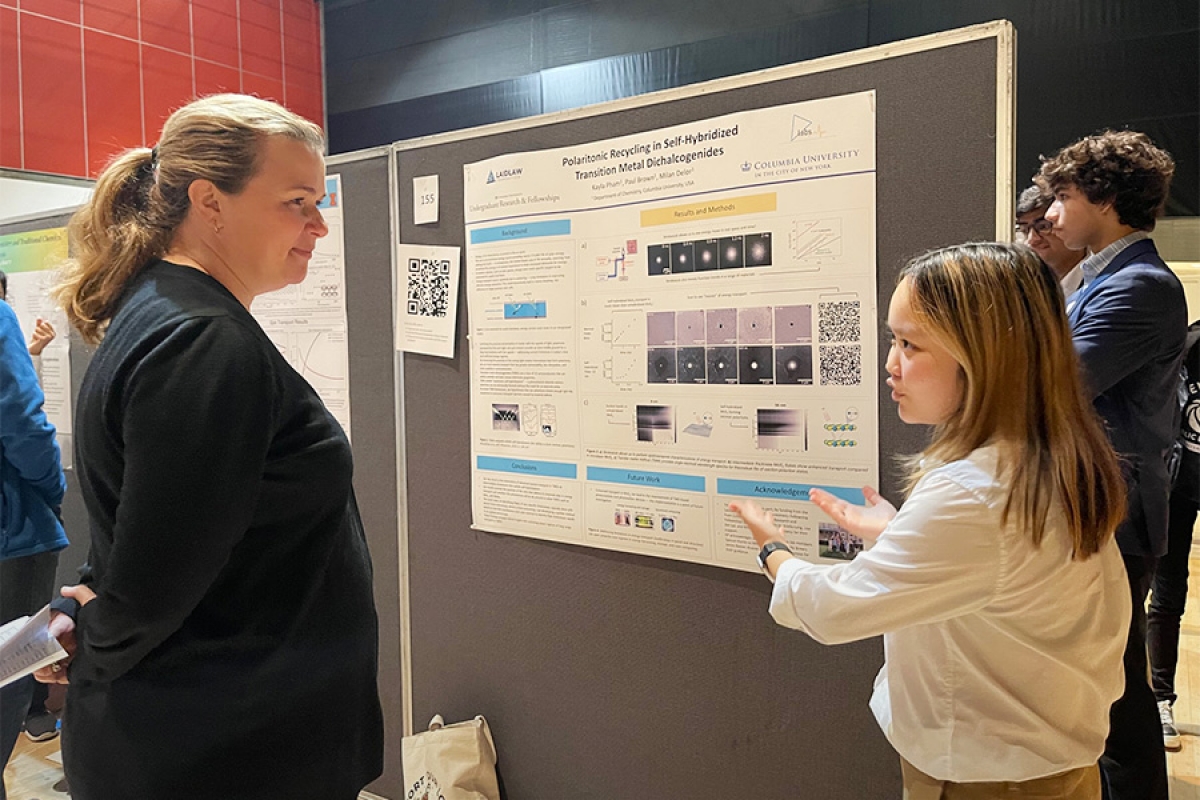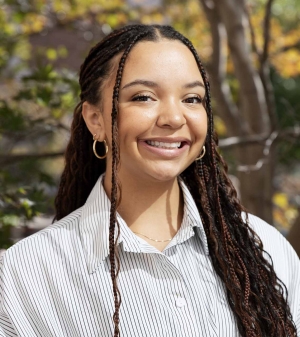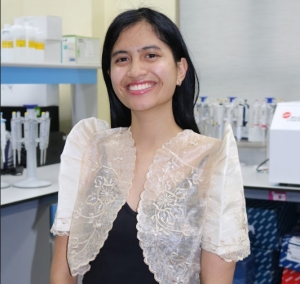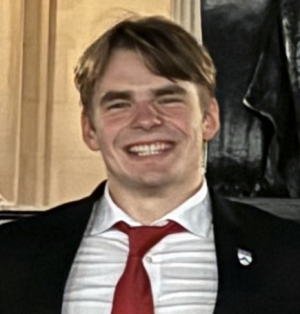
This past summer, Columbia College students’ interests sent them to campus labs and countries around the world to pursue research opportunities in disciplines from physics to social justice. They’ll present their work on Friday, Oct. 17, at the 2025 Undergraduate Research Symposium, held in Roone Arledge Auditorium from 10:30 a.m. to noon. Here’s a sneak peek at projects from three students, who shared more about where their curiosity took them.

EMMA ASHER
Geronimi grew up very familiar with courtrooms. Her mother is a chief juvenile officer, so she trick-or-treated in the halls of her local courthouse and even interned at the prosecutor’s office. However, she realized that for many people, the first time they see the inside of a courtroom is when they’re arraigned after being arrested.
“I spent a lot of time in arraignment court [during my internship] just sitting and listening, and it was discouraging to see how rushed this process is,” Geronimi says. “You get to talk for just a few minutes before you have to enter your plea in front of a judge. I saw the potential for something to educate people.”
Geronimi used her experience to design an app for people going through an arraignment. Court Clarity helps users understand the process, learn about different charges and explore the potential outcomes of pleading guilty, not guilty or no contest. She conducted research during the summer about the likelihood of defendants using the app, and whether they thought it would have helped or changed the outcome of their arraignment.
“I surveyed 100 people in Michigan and New York State who have been through arraignment,” Geronimi says. “I found that 100 percent of people who took the survey would have used the app.”
Geronimi’s research is ongoing, as the app is being tested in Louisiana courtrooms and she is collecting qualitative data from users. From her initial concept to now seeing the app in action, Geronimi says she’s excited to continue exploring tech solutions for navigating the justice system.
“This project has allowed me to implement something that’s real and actually helping people,” she says. “It has continued to push me in the direction of using technology for social good.”

COURTESY TARA LAGO CC’27
Lago spent the summer in a neuroscience lab not unlike the one she typically works in on campus. However, this lab just happened to be on the other side of the world.
The junior neuroscience major traveled to the University of the Philippines in Manila to hone the first machine learning model designed to study the effects of toluene on rat behavior. Toluene is a common ingredient in paint thinner and contact glue; its abuse as an inhalant is a widespread issue in the Philippines. Lago’s research will help scientists better analyze addictive behaviors in rats that have been given the drug, in order to continue developing treatments for addiction. As a Filipino-American, she says she was honored to contribute to the emerging neuroscience field in the country.
“The issue with the human eye is that there is bias. You’re expecting a result that fits your hypothesis,” Lago says by way of explaining the challenges that can come with researchers independently observing and quantifying the rats’ responses to toluene. “And it’s time consuming; it can be upward of 30 minutes of hand scoring your data set. It can lead to exhaustion and misidentification.” Algorithms, on the other hand, can cut that work down and produce data free from human error.
While Lago has worked with mice in her lab on campus, she says the experience of working with a different animal model was valuable, especially as she plans to pursue a Ph.D. in neuroscience and will need to know which animals are best suited for different research questions. While she’s not yet sure which area she’d like to specialize in, she’s found computational neuroscience intriguing.
“The behavior is the physical representation of what’s going on at the cellular level, so I think it’s really interesting to find that and then connect it to the more basic science of what’s going on in our brains,” Lago says.
She encourages undergraduates who are interested in research to take advantage of opportunities to connect with professors and to be persistent, just as she’s done. “Don’t sell yourself short, especially as a first-year. You might not have the most expertise, but a good mentor won’t expect that from you,” Lago says. “Showing determination, curiosity, an interest in the work, and the willingness to fail and try again is critical.”

COURTESY THADDAEUS KIKER CC’27
Kiker spent the summer at the Columbia Fusion Research Center quite literally trying to replicate stars on Earth. He works on the stellarator, a large machine that creates energy by smashing the nuclei of two atoms together. The fuel for these machines is plasma –– the super-hot fourth state of matter that makes up most of the stars in our universe.
Kiker’s goal was to figure out how to make sure that the plasma stays in place in the machine using magnets, while still making sure enough energy is produced by the fusion process. “We need to confine the plasma — otherwise it melts through our containers,” he says. “That’s why having magnets that use as little energy as possible… is important.”
His team completed eight tests during the summer, and even demonstrated how materials might be reused to make this kind of research easier to conduct, creating a blueprint others can work from. “Our job is to show that stellarators are actually economical, and once we’ve proven that, it’ll help other universities build their own. We’re hopefully going to show funding agencies that these are worth pursuing,” he says.
An astrophysics major, Kiker has always been interested in phenomena beyond Earth, but he developed a love for materials science after getting involved in the Columbia Space Initiative’s satellite building project. Rather than “using other people’s instruments,” as he’d done in the past, “it was an opportunity for the initiative to build something of its own.”
Kiker says his lab at the fusion research center has become one of his favorite parts of his College experience, and something he says makes him proud to go to Columbia. He gives special credit to the people who work there.
“There’s such a diverse group, from the undergraduate to Ph.D. level,” he says. “You get this broad spectrum of industry advice and perspectives on science.”